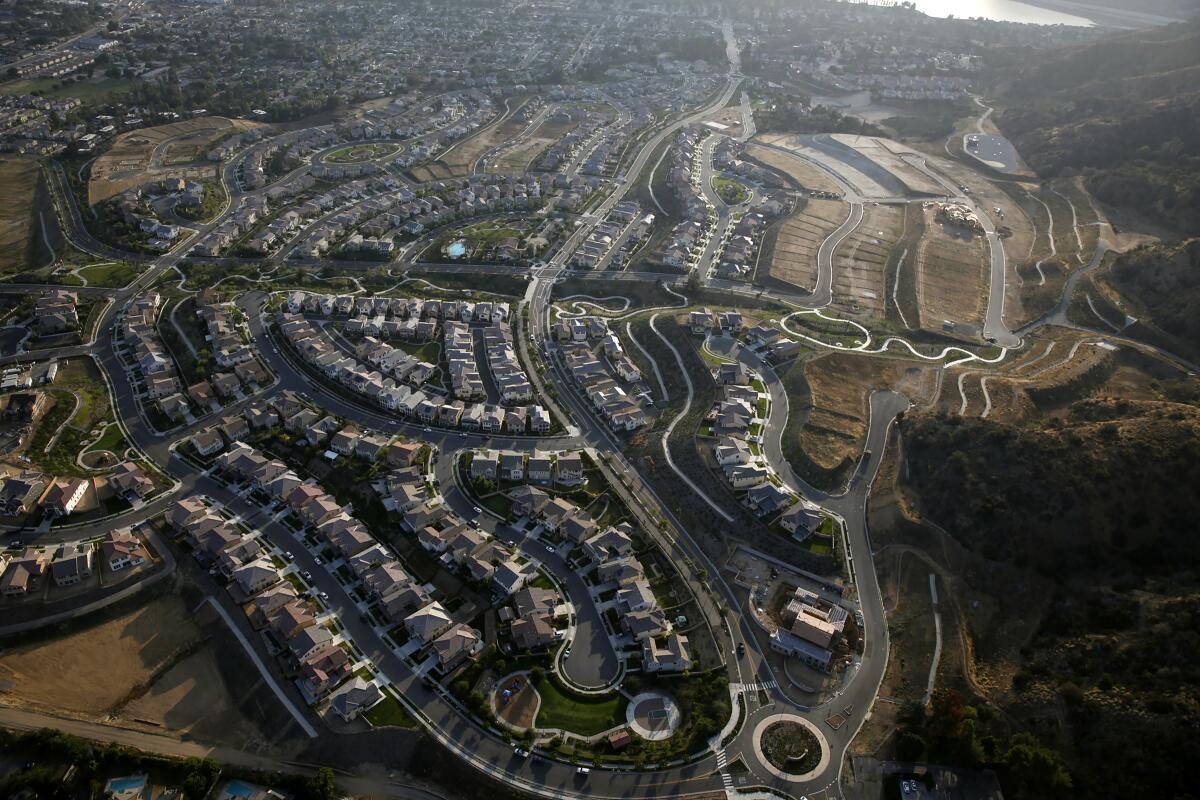Letters to the Editor: Ending single-family zoning is no guarantee of more affordable housing

- Share via
To the editor: “Sacrifice” single-family neighborhoods to solve the “housing crisis”? Really? Where’s the evidence? How will the state forcing cities to allow the development of R-1 zones address racism? What about the drought?
The Los Angeles City Council voted to oppose Senate Bills 9 and 10, the two pieces of legislation that would allow multifamily housing on single-family lots. The local electeds agreed that the bills would not generate housing that is affordable.
So, who stands to benefit? Land speculators, that’s who. Only developers have access to the capital it takes to build multifamily housing on R-1 lots.
This is a well-marketed land grab, not good public policy.
Tricia Crane, Santa Monica
..
To the editor: Have members of The Times Editorial Board ever driven down the hundreds of miles of underutilized commercial corridors in Los Angeles? Have they ever seen the low-density, one-story commercial buildings surrounded by acres of parking?
We need to incentivize the redevelopment of these areas to their potential.
If California reinstated redevelopment funding (stopped in 2011), cities could fund affordable housing. We could begin to transform these corridors into wonderful, vibrant communities instead of the blighted areas they are today. With this funding, affordable housing could be built in much greater numbers.
We don’t need to destabilize single-family neighborhoods to solve the affordable housing problem.
Maria Pavlou Kalban, Sherman Oaks
..
To the editor: As both an architect and real estate investor and developer, I can tell you there is no good reason to abandon single-family zoning. There are more than enough RD1.5, R2 and other low-density areas that could easily be up-zoned without sacrificing our R-1 neighborhoods.
As for increasing affordability, the building code needs to be trimmed back to the simple life-safety code that it used to be instead of a political tool. You cannot mandate every green perk, linkage fee, school fee, relocation fee, Measure JJJ requirement, environmental review, street dedication and more, and expect affordable construction of housing. Virtually all new construction is luxury is because there is no way to build anything and rent it for less and still have a project pencil out.
An apartment building in Phoenix is not significantly different than one in L.A., but the rents are much less. The building products cost almost the same, and labor costs vary but are not the core difference. Land may be more expensive, but the biggest variable is the unpredictable and expensive approvals process. The simpler and more predictable this process is, the more affordable it is.
John Janavs, Studio City
More to Read
A cure for the common opinion
Get thought-provoking perspectives with our weekly newsletter.
You may occasionally receive promotional content from the Los Angeles Times.










